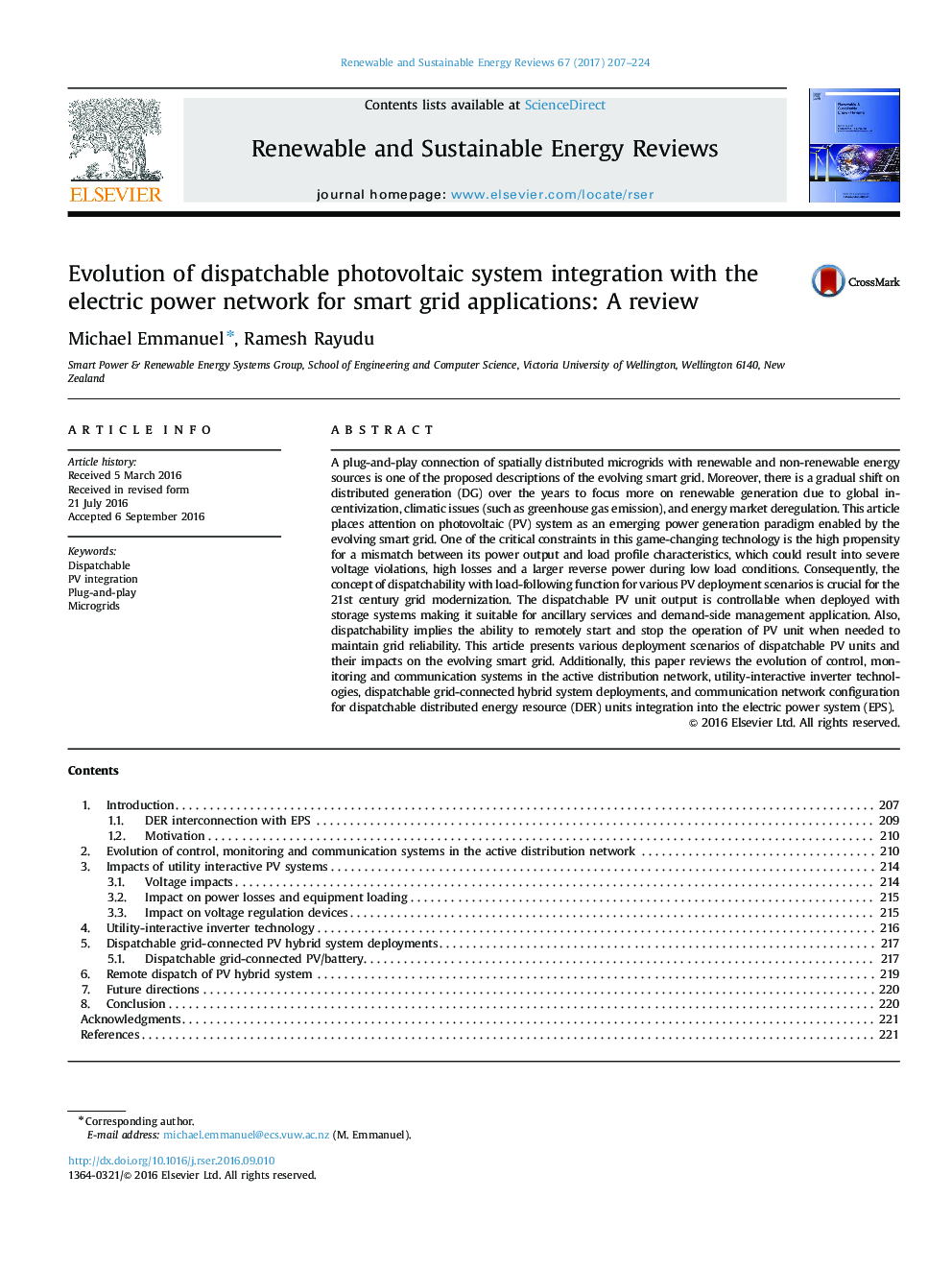| Article ID | Journal | Published Year | Pages | File Type |
|---|---|---|---|---|
| 5482729 | Renewable and Sustainable Energy Reviews | 2017 | 18 Pages |
Abstract
A plug-and-play connection of spatially distributed microgrids with renewable and non-renewable energy sources is one of the proposed descriptions of the evolving smart grid. Moreover, there is a gradual shift on distributed generation (DG) over the years to focus more on renewable generation due to global incentivization, climatic issues (such as greenhouse gas emission), and energy market deregulation. This article places attention on photovoltaic (PV) system as an emerging power generation paradigm enabled by the evolving smart grid. One of the critical constraints in this game-changing technology is the high propensity for a mismatch between its power output and load profile characteristics, which could result into severe voltage violations, high losses and a larger reverse power during low load conditions. Consequently, the concept of dispatchability with load-following function for various PV deployment scenarios is crucial for the 21st century grid modernization. The dispatchable PV unit output is controllable when deployed with storage systems making it suitable for ancillary services and demand-side management application. Also, dispatchability implies the ability to remotely start and stop the operation of PV unit when needed to maintain grid reliability. This article presents various deployment scenarios of dispatchable PV units and their impacts on the evolving smart grid. Additionally, this paper reviews the evolution of control, monitoring and communication systems in the active distribution network, utility-interactive inverter technologies, dispatchable grid-connected hybrid system deployments, and communication network configuration for dispatchable distributed energy resource (DER) units integration into the electric power system (EPS).
Keywords
Related Topics
Physical Sciences and Engineering
Energy
Renewable Energy, Sustainability and the Environment
Authors
Michael Emmanuel, Ramesh Rayudu,
